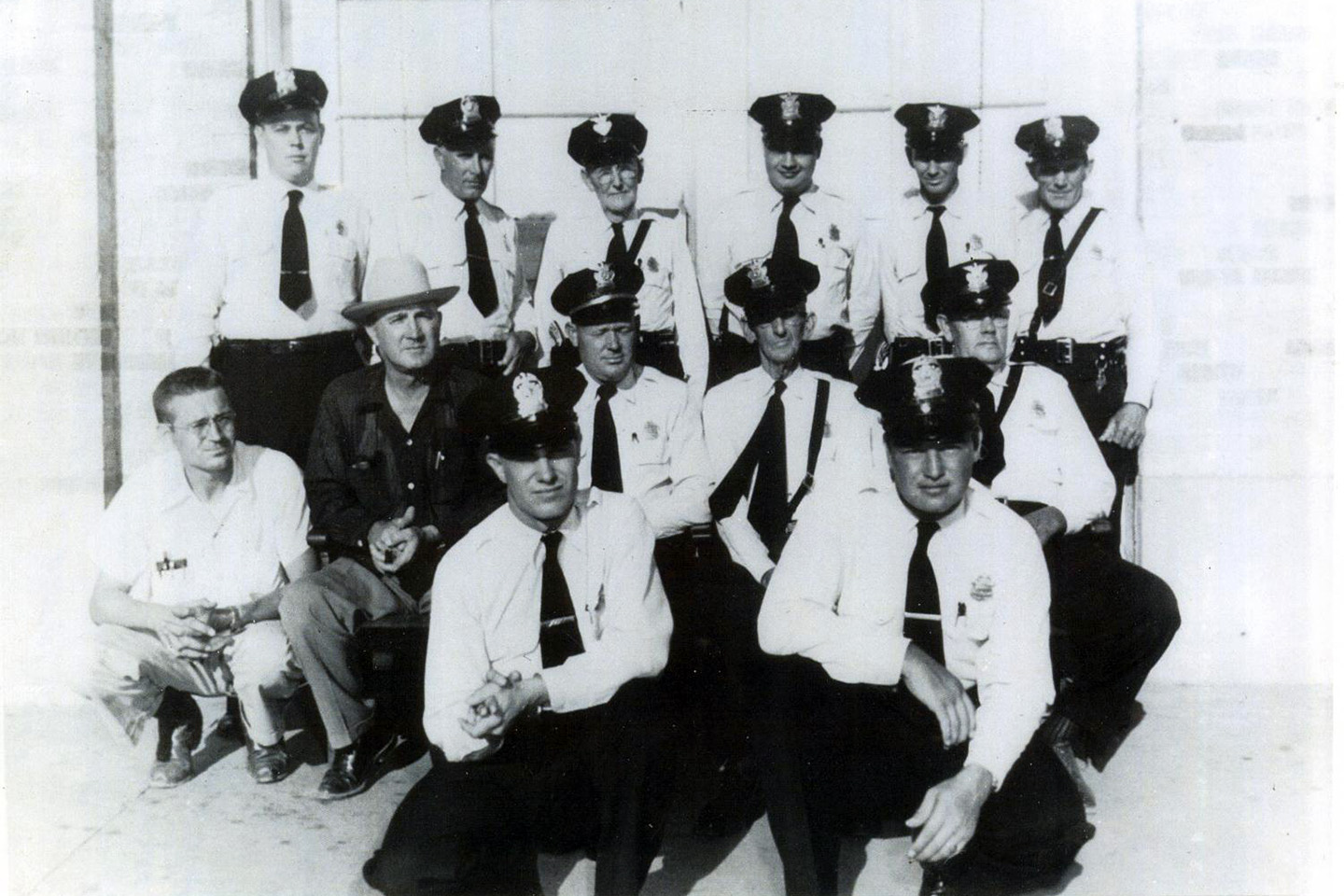
Arlington's Early Police Department
The following is part of an article published in a February 1972 special issue of The Citizen-Journal.
A night watchman, a flashing red light on a downtown building, and a Model T Ford.
A highly trained force of more than 100 police officers, the latest in space age communications equipment linked to a nationwide computer network, and a fleet of 31 modern patrol cars.
These two descriptions outline the evolution of the Arlington Police Department from its modest beginning as a function of the Fire Department in the 1920s to its present status of one of the best police forces in the state today.
The growth and development of the department mirrors the growth of the city, the growth of crime in recent years , and the scientific progress made in police work.
The force is headed by Chief of Police Herman Perry. It occupies the A.C. (Ott) Cribbs Law Enforcement Center, named for the veteran law officer who served in it from 1925, and as chief from 1934 until January 1971.
Cribbs remembers when the night watchman had keys with which he punched clocks on his beat about the then small country town, as a record of his having faithfully kept guard over the city.
He recalls that when the night watchman was needed while out on the beat, was signaled by a flashing red light on a downtown building , and he remembers the one police car, a Model T Ford.
He remembers Clyde Barrow and “Pretty Boy” Floyd, depression era gangsters who later died under the hail of police gunfire. Cribbs said that Clyde Barrow, who grew up in West Dallas, began with petty thefts which eventually led to his becoming one of the most wanted criminals in the country and later, to his death with that of his sweetheart, Bonnie Parker, in a police ambush, in Bienville Parish, Louisiana, on May 23, 1934. Cribbs knew Clyde Barrow only casually; he said that Barrow “was just a country boy gone wrong.” Cribbs remembers that, for a while, Barrow was a gravel truck operator and that he helped build the Arlington Downs Race Track.
It was the race track in the early 1930s, when betting on horse races was legal in the state, that led to the first significant increase in the police force. At this time, to handle the huge crowds that came into town on Derby Day, the force was increased to five men, some of whom were part-time.
Cribbs remembers when the State Police came into the area in the 1930s to patrol U.S. Highway 80 (which is where Arlington Downs was located). The Arlington police and the State Police exchanged knowledge during those days, said Cribbs—the State Police provided knowledge gained from their training, while the Arlington Police shared their knowledge of the local area. It was at this time that the Arlington Police Force got its first radio, which was used to tie into the State Police network.
In the early 1940s, with the entry of the U.S. into World War II, Arlington began to grow with the influx of defense plant workers, and a few more men were added to the force. It was after the War that population growth came at a very rapid pace, especially with the new GM Assembly Plant, and along with it, growth in the Police force.
The year 1971 was one of the greatest in growth in terms of acquisition of scientific apparatus for the Police Department. The radio system was changed from a single channel low band frequency to VHF frequencies activated through a repeater frequency, enabling the department to communicate without interference and without fear of being heard by criminals engaged in committing crimes. A private line feature of the new radio system locks out interference from other departments and a “scrambler” keeps criminals from listening in.
The repeater frequency was also a must for effective law enforcement in a city the size of Arlington. With the old system, a signal from a patrol car as far away as Pleasant Ridge Road was barely audible. With the new repeater, a two watt transmitter located on a tower in Vandergriff Park, even a walkie-talkie can receive a signal from the Arlington Police Department from a point as far distant as Euless. Also, before the new system was installed, there were “dead spots” at which the system could not reach a patrolman out on the beat. An example noted by police was the “dead spot” in a ravine off Arkansas Lane.
